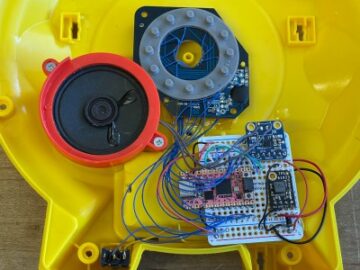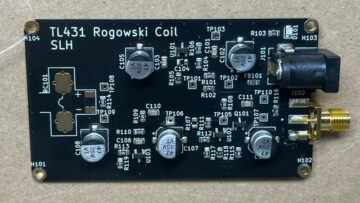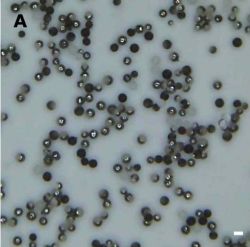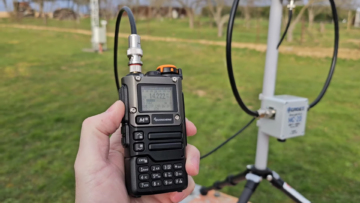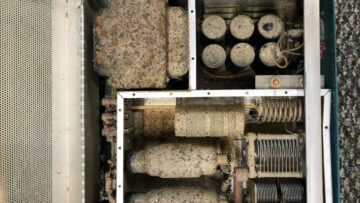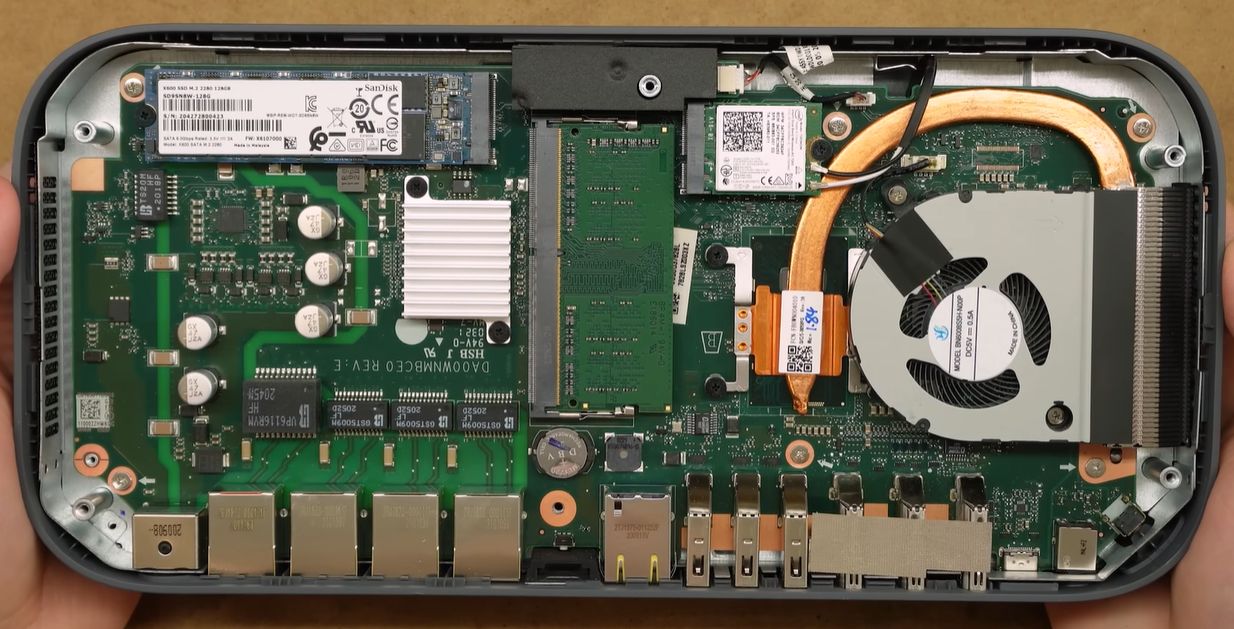
The Lenovo Meet is a collaboration with Google to bring Google Meet to customers in a ready to install kit for conference rooms and similar. Also called the Google Meet Series One, it features a number of cameras, speakers, display and more, along with the base unit. It is this base unit that [Bringus Studios] on YouTube tried to install a different OS capable of running Steam games on in a recent video. Along the way many things were learned about this device, which is – unsurprisingly – just another ChromeOS box.
After removing the rubber bottom (which should have been softened with a hot air gun to prevent damage), the case can be opened with some gentle prying to reveal the laptop-like innards. Inside are an 8th gen Intel CPU (i7-8550U @ 1.8 GHz), a 128 GB SATA M.2, 2 GB DDR4 RAM, along with 2 more GB of DDR4 a MicroSD slot and a Google Coral DA1 TPU on the bottom of the mainboard. It should be easy to install Linux, Windows, etc. on this other than for the ChromeOS part, which locks down the non-UEFI BIOS firmware.
Flashing a ChromeOS-afflicted device back to something resembling a standard x86 PC can be done with a range of open source tools, but these do require a few prerequisites, including a non-write protected SPI BIOS ROM and a ‘SuzyQ’ cable to gain debug access. The latter can be created yourself using a USB-C adapter and some resistors, but to gain write access to the SPI ROM, the WP pin had to be patched with a piece of wire to enable write access. This allowed the UEFI BIOS to be flashed at long last.
Another issue was the oddball power connector on the device, which accepts both 19V and 54V, but only needs one. This turned out to be a Kycon KPJX-CM-4S connector, which when combined with any random 19V laptop power supply is a lot cheaper than the genuine Lenovo part. With this resolved, the SATA M.2 SSD was upgraded to a 1TB NVMe SSD and the dual-channel 4 GB to single-channel 16 GB, before installing a new OS, starting with Bazzite.
Bazzite is a beryllium scandium cyclosilicate mineral, but also an image built on top of Fedora with a focus on Linux gaming. This installed without issues, but gaming performance with the anemic iGPU and single-channel memory was obviously terrible, and only CS2 and TF2 somewhat ran. In Windows 11, Steam worked much better, with even the newer Doom games running, albeit at 480p. Not a great gaming system, but after you hack away the ChromeOS nastiness, it could be an interesting system with less graphics-intensive tasks, and the built-in TPU could be useful for machine vision tasks.
Thanks to [Stephen Walters] for the tip.
[embedded content]
- SEO Powered Content & PR Distribution. Get Amplified Today.
- PlatoData.Network Vertical Generative Ai. Empower Yourself. Access Here.
- PlatoAiStream. Web3 Intelligence. Knowledge Amplified. Access Here.
- PlatoESG. Carbon, CleanTech, Energy, Environment, Solar, Waste Management. Access Here.
- PlatoHealth. Biotech and Clinical Trials Intelligence. Access Here.
- Source: https://hackaday.com/2024/02/19/installing-steamos-and-windows-on-a-google-meet-video-conference-computer/
- :is
- :not
- 1
- 11
- 16
- 1TB
- 2%
- 4
- 8
- 800
- 8th
- a
- About
- Accepts
- access
- After
- AIR
- albeit
- allowed
- along
- also
- an
- and
- Another
- any
- ARE
- At
- away
- back
- base
- BE
- been
- before
- Better
- both
- Bottom
- Box
- bring
- built
- built-in
- but
- called
- cameras
- CAN
- capable
- case
- cheaper
- collaboration
- combined
- computer
- Conference
- content
- could
- CPU
- created
- cs2
- Customers
- damage
- device
- different
- Display
- do
- done
- doom
- down
- easy
- embedded
- enable
- etc
- Even
- Features
- few
- Focus
- For
- Gain
- Games
- gaming
- Gen
- gentle
- genuine
- google meet
- great
- hack
- had
- Have
- HOT
- HTTPS
- in
- Including
- inside
- install
- installed
- installing
- Intel
- interesting
- issue
- issues
- IT
- jpg
- just
- kit
- laptop
- Last
- learned
- Lenovo
- less
- linux
- Locks
- Long
- Lot
- machine
- machine vision
- many
- Meet
- Memory
- mineral
- more
- much
- needs
- New
- newer
- number
- of
- on
- ONE
- only
- open
- open source
- opened
- OS
- Other
- out
- part
- PC
- performance
- piece
- PIN
- plato
- Plato Data Intelligence
- PlatoData
- power
- Power Supply
- prerequisites
- prevent
- protected
- RAM
- random
- range
- ready
- removing
- require
- resembling
- resolved
- reveal
- Rooms
- rubber
- running
- Series
- should
- similar
- slot
- some
- something
- somewhat
- Source
- speakers
- standard
- Starting
- Steam
- Stephen
- studios
- supply
- system
- tasks
- terrible
- than
- that
- The
- These
- things
- this
- tip
- to
- tools
- top
- tried
- Turned
- unit
- upgraded
- USB-C
- useful
- using
- Video
- video conference
- vision
- was
- Way..
- were
- when
- which
- windows
- windows 11
- Wire
- with
- without
- worked
- write
- you
- yourself
- youtube
- zephyrnet

